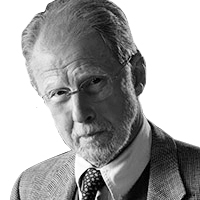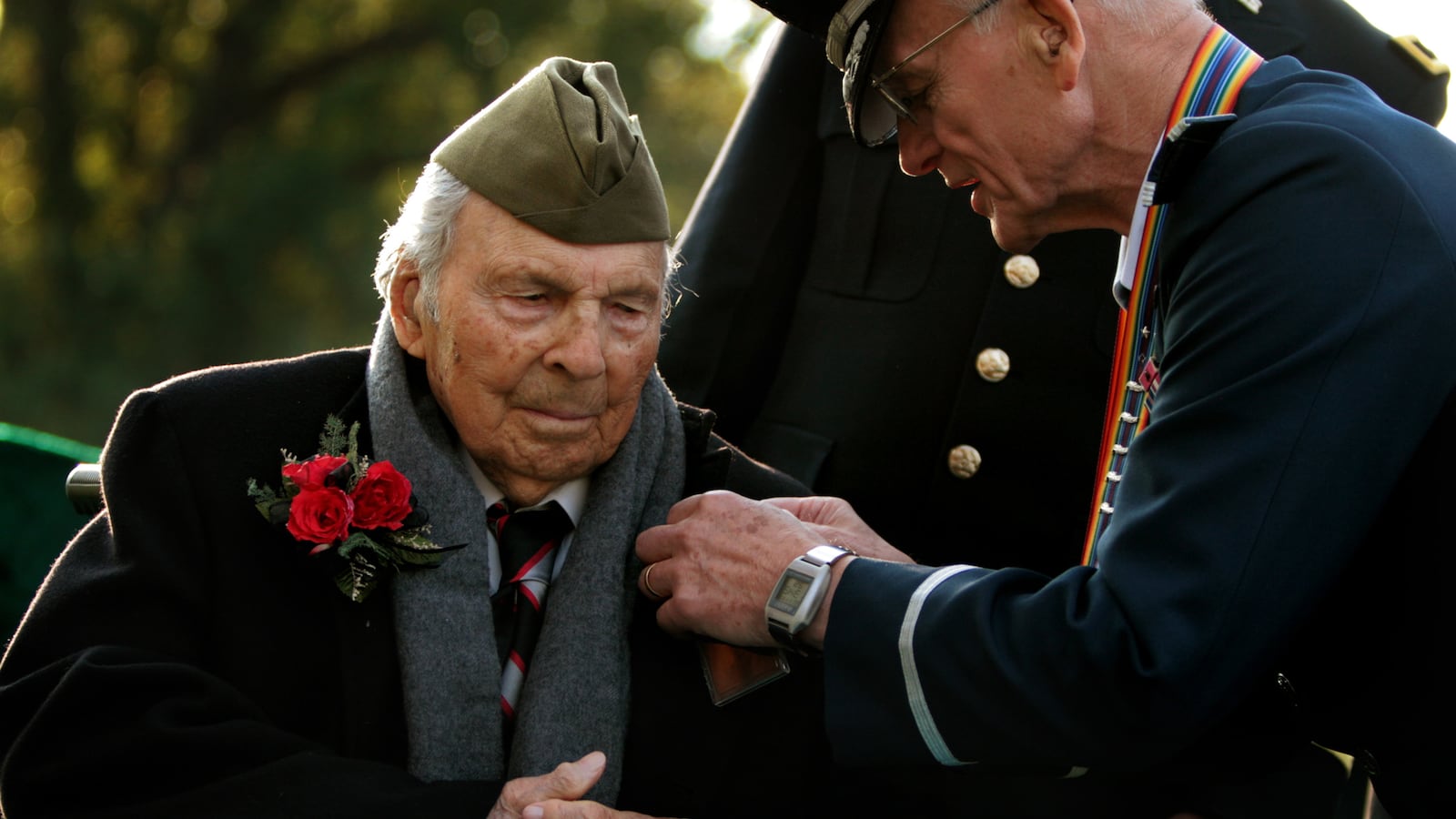Richard Rubin’s The Last of the Doughboys is a brilliant and unexpected delight. Interviewing the last surviving American veterans of World War I, all of them of course well beyond a hundred years old, is the kind of idea which would make any nonfiction writer clap his (or her) hand to the forehead and say: “Why didn’t I think of that?”

His subtitle on the other hand is a little strange for a European to assimilate: “The Forgotten Generation and Their Forgotten World War,” is not only cumbersome, but also puzzling. In Britain and Europe, no event is less forgotten than World War I, or “The Great War,” as it was called until 1939. Speaking as somebody who is half English and half Hungarian, World War I still seems to me a familiar and seismic event, as if it had only just ended. My father fought on the side of the Central Powers, as a soldier in the Imperial and Royal Austro-Hungarian Army, my maternal grandfather fought in the British Army, on different sides, and both were so traumatized by the experience that they never talked about it.
The war left its mark on every part of British life, no town too small not to have a war memorial, with a long list of the dead carved in stone, no college, school or public building without a plaque inside the door bearing an endless list of names of those who were killed in Flanders, on the Somme or elsewhere, no poetry more often recited than that of Wilfred Owen, Siegfried Sassoon, Rupert Brooke, and Robert Graves. To this day, I, like many in Britain, still wear a poppy on Nov. 11.
The war left its mark on history too, erasing empires, replacing Austro-Hungary with a dangerous brood of Eastern European and Balkan mini-nations, carving up the Ottoman Empire into colonies, soon to become statelets, with artificial frontiers containing populations of different ethnic and religious backgrounds who hated each other, and bringing about the birth of Fascism, Communism, and Nazism—for the Second World War, awful as it was, was merely a reprise of the First with some minor switching of smaller powers, and the addition of a war in the Pacific to that in Europe. The years 1914-1918 were, and will perhaps always remain, our mental image of Armageddon: the mud, the trenches, the barbed wire, the squalor, the millions of dead for no good purpose.
Well, the passage of time has done its work, the fault line in the world is no longer the Rhine, but the Yellow Sea, what remains of the trenches is merely a grisly tourist attraction, the seemingly endless landscape of well-tended military cemeteries on the Western Front did not scare us away from fighting a second world war, and will doubtless not prevent us from fighting a third, despite Woodrow Wilson’s hope that it was “a war to end war.”
Rubin begins his clever, engrossing, moving, and richly detailed book with the observation that in almost every American town the monument to the dead of the First World was invariably larger than that of any other war, even the Civil War, and I was about to dispute this claim when it occurred to me that in Rhinebeck, N.Y., a 20-minute drive from my house, the only substantial memorial is a large and hugely admired twice-life-size sculpture of a World War I “Doughboy,” in the style of James Montgomery Flagg, carried out in bronze by Allen G. Newman, a magnificent portrayal of an American soldier, head slightly bowed as if in mourning, wearing the old-fashioned flat-brimmed steel helmet and carrying a Springfield Model 1903 rifle with the long bayonet fixed slung over the left shoulder. It is the biggest, the boldest, the most visible, and indeed the only monument in town. Richard Rubin is right.
Wars have come and gone since then, but even in South, where monuments to the War Between the States or to Robert E. Lee proliferate, the Doughboy lives on in bronze or marble, gradually coming to represent not only the dead of World War I, but ALL the dead, of every war. Even the young who are taught nothing about that war (and not much more, for that matter about the one that followed it) know what the Doughboy stands for: war, sacrifice, courage, death, and perhaps the failure of politics too, for every war, to paraphrase Von Clausewitz (“War is a continuation of policy carried out by other means”), is the result of a failure to solve a problem between nations. “Jaw, jaw, jaw, is better than war, war, war,” as Winston Churchill, who briefly commanded an infantry battalion on the Western Front in World War I, put it—a piece of wisdom which we have ignored in Korea, Vietnam, Iraq, Afghanistan and, dare I say, may be about to ignore again in Syria.
So these couple of dozen ancient survivors of the Great War, aged 101 to 113 when Rubin interviewed them, have something to teach us, as well as something to say about themselves, and about that war. One wouldn’t have thought there was anything more to say about a war that produced thousands, tens of thousands, perhaps hundreds of thousands of books, both fiction and nonfiction, in scores of languages, and which included in the United States both A Farewell to Arms and The Guns of August, but Rubin is a sensitive and terrific interviewer, a good listener, with a faultless eye and ear for detail, and each of his interviewees has a story to tell. They have seen enough death to last a lifetime, and were each one foot away from their own deaths when he met them, but they remain surprisingly lively, informative, and good company. Rubin himself is not only a good writer and born raconteur, with a gift for telling the reader things that are unexpected and fascinating—American songs in World War I, women who joined the United States Navy in World War I, the sad fate of African-American soldiers—but one with a dogged determination that made him spend 10 years on this book, all while working against a deadline, since the centenarians-plus he was seeking were dying off at a rate faster than he could interview them.

How Rubin tracked them down is also interesting. It turns out that in 1998, French President Jacques Chirac decided to award each of the surviving American servicemen who had fought in France with the Légion d’Honneur, and that the research and legwork of finding the last survivors was carried out by the French—“Lafayette, nous voici!” indeed, it was a question of “Wilson, nous voilà!” How typical of the Franco-American relationship that the French should care more about these old American soldiers than we, their fellow countrymen, did, and should be determined not to let them “fade away” (to quote General Douglas MacArthur, who fought heroically in France himself) forever unidentified and unthanked. If nothing else, Rubin’s book may help to correct the snotty way of looking down on France that has become so prevalent in America. Whatever they may think of American foreign policy or food, the French remain grateful for America’s help in World War I, and know more about it than Americans themselves do.
What Richard Rubin has done is remarkable—his book is at once a cultural history of a vanished America, simpler, more rural, less driven by technology and science, poorer, but infinitely more “neighborly,” in the best sense of the word, a military history of the best kind, and a chance to meet a truly fascinating group of people, not only remarkable because they are old, far older than most of us have any hope of becoming, but brave, touching, amazingly tough even in oldest age, without a trace of self-pity and full of stories that are at once simple and profoundly moving. There is no boasting here, even among the men who have much to boast about, just a modest, clipped, and honest recital of the facts. I liked every one of them, and counted myself lucky that Richard Rubin has achieved the most difficult of feats, to find a new and different way of writing about World War I (which I would have thought almost impossible) and to have brought to vivid life a group of truly forgotten people, who once did something memorable, then slipped through the cracks into a long anonymity from which they might never have emerged.
I cannot remember a book about that huge and terrible war that I have enjoyed reading more in many years. It is as interesting and original, in its own way, as Nicholas Murray’s The Red Sweet Wine of Youth (2010), about the brief lives of the British war poets, and fills one with wonder, awe and admiration at people who had so much courage, and endured so much, who have survived and lived on through such great changes, and who remain, to an extraordinary degree, touched by the nobility of all those who served in surely the largest and most pointless of wars, and came home to find that in the end nobody cared.
A sad, but somehow deeply touching book, reminding every reader: “The oldest have borne most. We that are young/Shall never see so much, nor live so long.”






